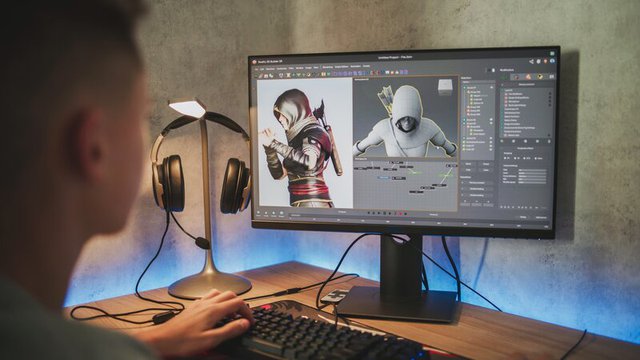

Video games are among the most dynamic and influential entertainment industries worldwide. From indie studios to AAA blockbusters, every successful title follows a structured process.
But what exactly are the game development stages, and why are they so crucial for future designers?
For those eager to turn creativity into a career, the Degree in Video Game Design at Universidad Europea offers the ideal platform. By understanding the game development process, students can bring their concepts to life while mastering both technical and artistic skills.
Defining the game development stages
The phrase game development stages refers to the structured phases that a video game goes through from its initial idea to its public release. While the exact steps may vary depending on the studio or project size, the main stages usually include:
- Conceptualisation
- Pre-production
- Production
- Testing and quality assurance
- Launch and post-launch support
Each stage contributes to the game’s creative vision, technical foundation, and overall success.
Stage 1: Conceptualisation
The first of the game development stages is the idea phase. Designers brainstorm the game’s theme, genre, mechanics, and target audience. This is when the core concept is written down, and the “fun factor” is identified.
Questions asked during this stage include:
- Who is the player, and what is their role?
- What makes this game different from existing titles?
- What platform will it run on?
Stage 2: Pre-Production
In pre-production, teams expand the concept into a detailed plan. Storyboards, scripts, design documents, and technical outlines are created. Budgets, timelines, and team responsibilities are also defined.
This is one of the most important game development stages, because it ensures that the project has a clear roadmap before heavy production begins.
Stage 3: Production
The production stage is where the game comes to life. Developers code gameplay mechanics, artists create 2D and 3D assets, and sound designers craft the audio environment. Writers refine dialogue and narrative, while designers balance levels and challenges.
Production often takes the longest of the game development stages and requires strong teamwork across multiple disciplines.
Stage 4: Testing and Quality Assurance
Testing ensures that the game is fun, stable, and bug-free. QA testers examine every mechanic, look for technical glitches, and provide feedback on gameplay balance.
This stage is essential to guarantee a positive player experience. Skipping or rushing it can damage the reputation of even the most ambitious games.
Stage 5: Launch and Post-Launch Support
The final of the game development stages is launch — but the process doesn’t stop there. After release, developers monitor player feedback, fix bugs, and often add new content through patches or expansions.
Post-launch support is critical in today’s gaming industry, where long-term player engagement can define a game’s success.
Conclusion: why understanding game development stages matters
The game development stages form a roadmap that transforms creative ideas into playable realities. From brainstorming concepts to testing and post-launch support, each phase plays a unique role in shaping the final product.
For students in the Degree in Video Game Design at Universidad Europea, or any of our degrees in video games design, of which we offer in English and Spanish, mastering these stages ensures readiness for the competitive games industry. By understanding both the creative and technical processes, graduates can contribute effectively to innovative projects.
In summary:
- Game development stages = steps from concept to release.
- Conceptualisation defines ideas and audience.
- Pre-production sets the roadmap and resources.
- Production builds assets, mechanics, and narrative.
- Testing ensures quality and balance.
- Launch and post-launch support maintain long-term success.